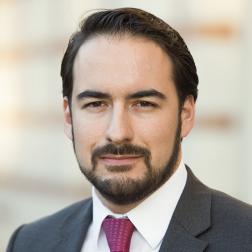Mexico City’s Subway Tragedy: An Example of Institutional Weakness and Corruption

On the night of Monday, May 3, a Mexico City subway overpass collapsed, killing at least 24 people and injuring 79 others. A graphic video captured by a city surveillance camera showed how train cars packed with passengers plunged toward vehicles on the road below.
Mexico City’s subway system transports 4.6 million passengers daily over its 12 lines. Just last January, after a fire struck Mexico City subway headquarters, Florencia Serranía, Mexico City’s subway system director, reported on the subway system’s poor maintenance record over its 52-year history and the urgent need for modernizing the entire network. Unfortunately, the May 3 tragedy struck before any steps were taken to improve the system. It is notable that this and other recent subway incidents have involved the system’s newest line, Line 12, which was built and opened about nine years ago while Marcelo Ebrard, now Mexico’s foreign minister, was mayor of the city.
This tragedy highlights several major flaws with Mexico’s current government and points to new heights in both institutional weakness and corruption, with deadly results for Mexico’s citizens.
A Missing Culture of Infrastructure Maintenance
As the Mexico City subway director said in an interview last January, there is a missing culture of maintenance in Mexico. Major infrastructure projects are often proposed and even carried out, but there appears to be little effort to ensure regular, proper maintenance. Maintenance is often an afterthought in most projects and it is hardly ever budgeted and planned for. The result is that most public works often deteriorate — acquiring the dilapidated look of many places in Mexico — fail to stay in good working order, and sometimes nosedive with deadly consequences. Mexican media outlets regularly report government worker complaints about poor maintenance in key facilities. Recent incidents in refineries such as the one located in Tula, Hidalgo, is a good example. In a specific report, workers at that refinery complained about the lack of equipment and maintenance to President López Obrador a few weeks ago during a rally.
As long as Mexico fails to consider the importance of maintenance as part of the culture of infrastructure development and economic growth, incidents like those witnessed in recent years will continue.
“Republican Austerity”
The already burdensome absence of a culture of maintenance has been made worse by López Obrador’s draconian austerity measures. The “Republican Austerity” policy that he has established and spread throughout the federal government, and in the state governments governed by MORENA, have exacerbated this missing culture of maintenance. There is a dearth of funding for even essential services, such as health care, public transportation and women’s and children’s shelters. Other cuts in budgets with no examination of the consequences have drained the public service sector of capable and talented officials who have gone to the private sector for better opportunities and working conditions. This radical austerity — often implemented in the name of fighting corruption — is affecting the proper functioning of all government institutions as they hemorrhage expertise and come to be staffed by inexperienced workers from López Obrador’s political campaigns. Unfortunately, Mexico cannot expect to recover from this talent drain soon. Most analysts suspect that most “savings” from the cuts are going to pharaonic projects that Lopez Obrador is committed to building — such as the Dos Bocas Refinery, the Mayan train, and the new Mexico City airport — and to rescue failing companies such as PEMEX, the national oil company, and CFE, the national electric utility.
Corruption
Since its inauguration in October 2012, Line 12 of Mexico City’s subway has been involved in multiple controversies. This line mainly serves the working class neighborhoods of Tláhuac and Iztapalapa. Sixteen months after the inauguration, Line 12 was closed due to structural and operational failures. Authorities and companies blamed each other for failures in the design and operation of the system. A year later, the line was fully reopened, and Mexico City’s former mayor, Miguel Mancera, launched an investigation that resulted in the suspension of 30 public servants. This investigation touches on Foreign Minister Marcelo Ebrard who, as noted earlier, was Mexico Citys mayor when Line 12 was constructed.
Another flag went up after the 2017 Mexico earthquake when subway workers and users reported that Line 12 was affected by the shaking and tremors. This week’s tragedy could have been prevented if the government had listened to residents’ questions about the structural integrity of the subway overpass.
The subway crash comes as an important election the president had hoped his party’s candidates would win approaches. The tragedy could damage MORENA’s performance at the polls, as there is already much skepticism about the country’s direction under López Obrador’s leadership. This time, he cannot blame the opposition — a favorite political tactic — as his closest political allies have governed Mexico City for the last 20 years. Avoiding responsibility will be very difficult. The incident also corrodes his carefully cultivated image as a fighter of corruption, as he will likely fail to punish anyone on his team for the tragedy.
Conclusion
The Mexico City subway collapse also affects the prospects of two frontrunners in line to succeed López Obrador as president: Foreign Minister Marcelo Ebrard and Mexico City’s Mayor Claudia Sheinbaum. Worse, Monday’s accident is third fatal incident involving subways during Sheinbaum’s administration. On Tuesday, during López Obrador´s daily conference, Sheinbaum promised that an independent investigation by an international firm would determine the causes of the accidents. However, her problem, and the president’s, is that most Mexicans are losing patience with the López Obrador government and further losing trust in state institutions. That cannot be good for Mexico’s future governance.
This material may be quoted or reproduced without prior permission, provided appropriate credit is given to the author and Rice University’s Baker Institute for Public Policy. The views expressed herein are those of the individual author(s), and do not necessarily represent the views of Rice University’s Baker Institute for Public Policy.



